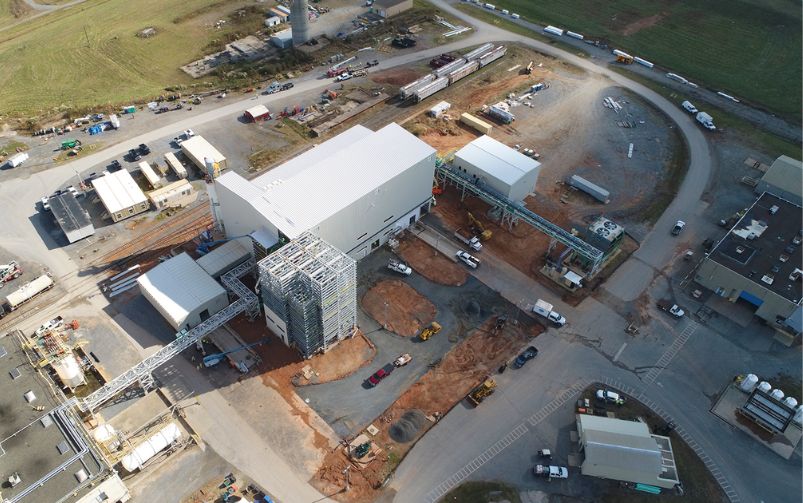According to Skeena Resources, Eskay Creek was one of the largest employers of Tahltan people from 1994-2008 when it was in operation. Courtesy of Skeena Resources Limited.
There are a variety of successful strategies that mining companies can utilize to boost Indigenous participation in the workforce, including face-to-face recruitment, mentorship and building capacity in communities, according to the featured presenters at an August 25 webinar hosted by the CIM Diversity and Inclusion Advisory Committee.
Erinn Mah, senior lead of Indigenous relations at Teck Resources Limited, and Freda Campbell, community relations director at Skeena Resources Limited, both emphasized the importance of mining professionals taking a “boots on the ground” approach to recruiting and speaking to Indigenous people directly in their communities.
A personal connection
“It’s not hard to bring somebody into the schools and talk about what they do,” Campbell said. “Making that connection and making opportunities real… is the best way to explain what you’re doing and how you’re doing it.”
To expose candidates to different kinds of work, Mah suggested sending employees in a variety of roles to job fairs, such as heavy equipment operators or mill workers, in addition to human resources (HR) representatives.
“Then you stay away from that not very interesting job description and pamphlet, and find a way to connect as human beings, and that’s going to get [them] really interested in this work and excited,” Mah said. “It makes it more real and breaks down that barrier of, ‘That’s something that someone else does, that I don’t know anything about. No one in my family does that.’ Bringing it as close to home, and making it as personal as possible, is the most powerful way to get through to people.”
Thinking outside the box
Campbell recommended using videos and social media to showcase “real people you can relate to” to share information and connect with the public, tools which she said have made it not only easier to reach more people about opportunities in mining, but also to dispel long-held stereotypes about the industry.
“Back in the day, people thought mining was just digging up dirt, a dirty place to work, where you’re [always] underground,” she said. “I think there’s a much better understanding [today].”
She described how Skeena Resources has provided a gateway into the industry through its Tahltan Mentorship program. Launched in 2020, the program mentors Tahltan post-secondary students and recent graduates and gives them an opportunity to work on projects and assignments related to its proposed revitalization of the Eskay Creek gold-silver project, which is located in British Columbia within the traditional territory of the Tahltan Nation and the asserted traditional territory of the Skii km Lax Ha Nation.
Mah stated that mining companies need to do more to raise awareness of specific employment opportunities, such as posting on different job boards and thinking about the communities they operate in and where people might go for information. For example, this could mean placing posters in accessible public places like community centres.
Addressing the skills gap
Mah discussed the importance of building a pathway to mining jobs, which could be accomplished through bridging programs or apprenticeships that have proved successful in other industries. Mah also recommended providing a rotational program where entry-level employees job shadow in different departments to get exposed to different opportunities available at the company.
Once it is time to interview candidates, Mah said that anyone involved in hiring should have cultural awareness training to ensure they are not culturally biased: “Indigenous people often don’t want to talk themselves up as it’s a very humble culture, so make sure you are aware that they might not want to speak so fully to a lot of their experiences as it could be looked at as boasting. So how do you make it into more of a conversational format, as opposed to a question-and-answer format to get around that and draw people into the conversation?”
According to the Mining Association of Canada’s 2023 report called “The Canadian Mining Story: Economic Impacts and Drivers for the Global Energy Transition”, the minerals industry employed 11,300 Indigenous people in 2020. Pulling from 2021 census data, the report stated that from 2011 to 2020, Indigenous employment accounted for an average of 7.6 per cent of the mining industry and 3.6 per cent of the broader minerals sector. According to the 2021 census, there were 1.8 million Indigenous people in Canada, representing five per cent of the total population.
Information released by the Indigenous Resource Network, which also pulled data from the 2021 census, stated that Indigenous people in Canada make $93,600 on average in the mining sector, almost double than what they earn in other industries.
Building capacity
Campbell explained that the remote communities where mines typically operate may be experiencing a lack of resources and front-line workers, so it would be beneficial to hire a role like a social development coordinator or registered therapist who can address the social impacts of working at a mine site.
In response to a chat question asking how to support employees with historical trauma, Mah highlighted the importance of creating a culture where workers feel safe talking to HR: “If people are struggling and need accommodations and don’t feel like they can come to HR to talk about it, they are going to leave. You have to make sure there is a doorway for people to actually have these conversations in a safe way.”
Mah also suggested filling an HR role with an employee who has a social work background and experience with trauma-informed care.
Looking ‘outside your bubble’
Mah encouraged webinar attendees to collaborate with colleagues in other industries to learn new ways to improve Indigenous employment.
“We get trapped in our little bubbles,” she said. “Looking outside your bubble is really important, you can draw a lot of inspiration from other ideas.”
“Attracting the Indigenous Workforce into the Mining Industry” and past DIAC webinars can be viewed on the CIM YouTube channel.




